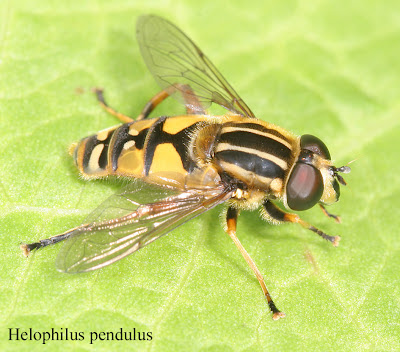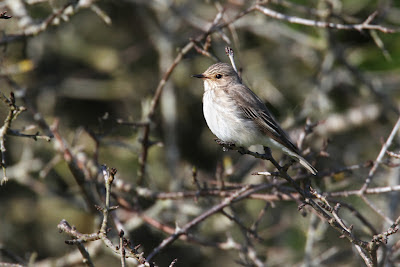West Glamorgan can boast plenty good displays of interesting plants, but Green-winged Orchid (
Anacamptis morio) is not one of them. Compared to adjacent areas, where the species can flower abundantly, it is a very scarce plant in our area and this BSBI monitoring site shows one of the reasons why.
.jpg) |
| sheep-grazed cliff-top turf above Fall Bay |
The cliff-top grasslands at the few sites in Gower where this species occurs are grazed exceptionally close by sheep and rabbits, with any thing juicy or succulent like an orchid flower or seed pod also being targeted at night by slugs and snails. Thankfully orchids can be long-lived and will survive in a vegetative state for many years. Successful reproduction must be an extremely rare occurrence where these conditions persist and you can't help wondering about the viability of small isolated populations such as this one.
.jpg) |
| the best example of a Green-winged Orchid I could find at this site |
Whilst the Green-winged Orchid appears to have a rather tenuous hold on the heavily-grazed cliff tops, there are plenty of other species that appear to thrive in these conditions. Western Clover (
Trifolium occidentale) is a rather unimposing species, but has a very restricted UK distribution. It flowers earlier than the similar, but much commoner White Clover (
Trifolium repens) and smaller, thicker leaves and a notched standard are two good characters to look for.
.jpg) |
| Western Clover above Fall Bay |



+15may12+(1a).jpg)


.jpg)
+19may12+(1a).jpg)
.jpg)
.jpg)
.jpg)
+27May12.jpg)


.jpg)
.jpg)
.jpg)




+26May12.jpg)


.jpg)
+28Dec11+(R+Ross).jpg)




+16may12+(05a).jpg)
+16may12+(09a).jpg)
+16may12+(01a).jpg)
+15may12+(1a).jpg)


+13may12+(07a).jpg)
+13may12+(08a).jpg)
+13may12+(04a).jpg)
+13may12+(06a).jpg)





.JPG)
.jpg)
+Penclacwydd+6.5.12+Rob+Taylor.jpg)
+Penclacwydd+7.5.12+Rob+Taylor.jpg)
.jpg)
.jpg)